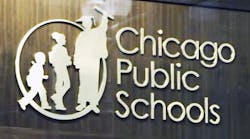Education administrators have to deal constantly with facility-related decisions. Close the school on the north side or the south side? Renovate or build new? Replace roofs now, or in five years? Where to draw attendance-area boundaries so that classroom space is being used most efficiently?
Facility-management systems help schools and universities keep track of building characteristics and conditions, and enable them to plan and prioritize repairs. But the guidance those systems provide is only as good as the information gathered. The key to an effective system is accurate and up-to-date data, says "Facilities Information Management: A Guide for State and Local Education Agencies," compiled by the National Center for Education Statistics.
"Without consistently defined indicators, policymakers cannot accurately assess the amount of funding needed for school construction, where funds for new schools are most needed, or whether funds are being spent efficiently or equitably," the guide says.
The key pieces of data fall into four categories: condition, design, utilization and funding.
•Condition measures include a building’s functional age, the replacement cost and the Facility Condition Index. The functional age may be the actual age of a building, or the age starting from when it received a full modernization. Replacement value measures the cost of building a comparable structure. The Facility Condition Index is the cost of correcting a building’s deficiencies divided by the cost of replacing the building.
The guide warns that it is critical for education institutions to calculate the replacement value the same way for every building.
"Estimates of costs to correct deficiencies and of replacement value are very susceptible to manipulation by architects, planners, contractors and facility managers," the guide says. "If there is a desire to replace a school, the replacement value can easily be underestimated and the cost to correct deficiencies can be overestimated."
The guide identifies three kinds of facility deficiencies: life cycle (when a building element is used beyond its recommended life); maintenance (when a building element is operating at less than optimal levels); and site. Site deficiencies can be natural (e.g., inadequate size, rocky terrain) or design-related (e.g., inadequate parking, lack of road access).
•Design measures include data that convey the size, type and location of spaces. The data will help education institutions determine whether facilities meet space standards (as established by a state or individual institution).
•Utilization measures include enrollment capacity and density factors to determine a building’s utilization rate—student enrollment divided by enrollment capacity.
•Funding measures include calculations of maintenance, utility and capital costs. Having all institutions gather such information enables the data to be compared with other schools in a state or elsewhere in a district.
"This has become particularly important in light of ongoing court challenges to perceived inequities in school funding," the guide says.

